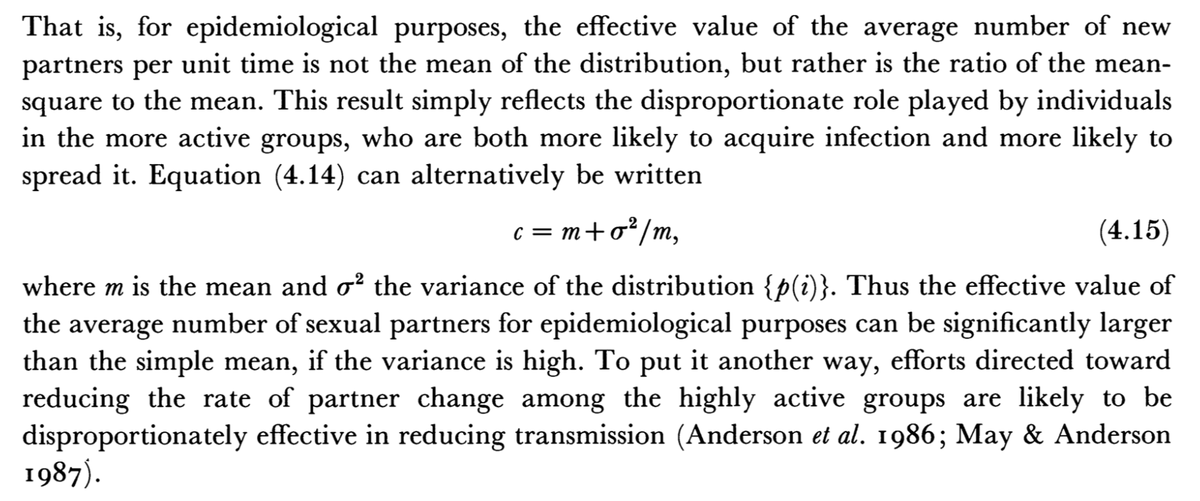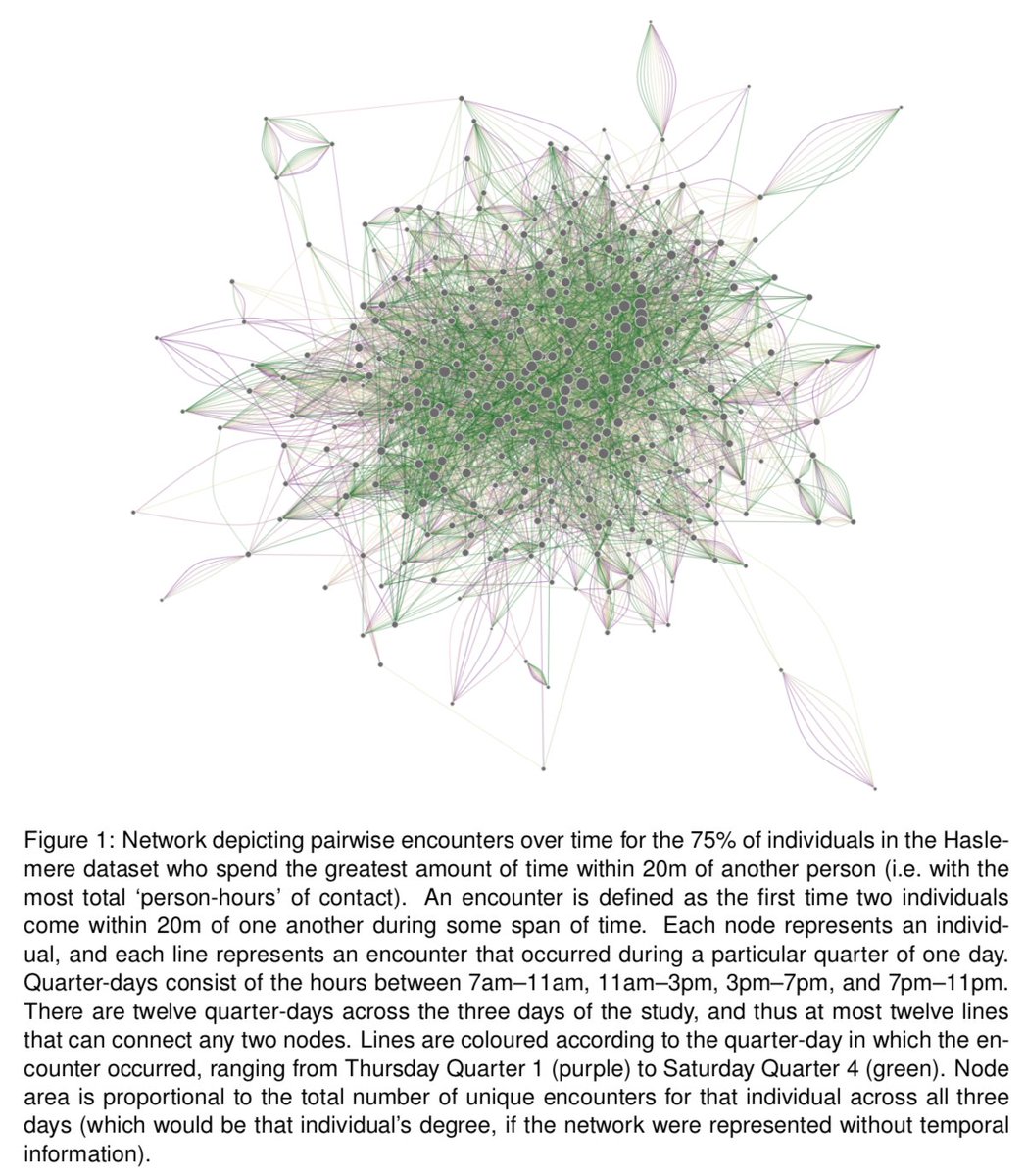How much could variation in social contacts and susceptibility influence the size of an outbreak (and hence notions of herd immunity)? Well, it depends on a few things... 1/
It& #39;s been known for a long time that network structure can influence outbreak dynamics, e.g. because highly connected individuals are in theory more likely to be get infected and pass infections on (from analysis of STD dynamics: https://royalsocietypublishing.org/doi/10.1098/rstb.1988.0108)">https://royalsocietypublishing.org/doi/10.10... 2/
Moreover, if & #39;popular& #39; people are mostly connected to other popular people, we& #39;d expect faster outbreak that doesn& #39;t spread that widely. But if highly connected linked to less connected people, we& #39;d expect slower epidemic that spreads further (e.g. https://pubmed.ncbi.nlm.nih.gov/2517202/ )">https://pubmed.ncbi.nlm.nih.gov/2517202/&... 3/
In networks where individuals have very different numbers of contacts, vaccination strategies that target the more-connected individuals can therefore achieve herd immunity at a lower threshold ( https://arxiv.org/abs/cond-mat/0207387).">https://arxiv.org/abs/cond-... But there& #39;s a catch... 4/
Network models often assume individual popularity is fixed: some people have lot of contacts and others don& #39;t. But human interactions can be wonderfully dynamic over time. In BBC Pandemic study, contact (and hence outbreak) dynamics could vary a lot. https://www.biorxiv.org/content/10.1101/479154v2">https://www.biorxiv.org/content/1... 5/
These dynamic contacts can influence COVID-19 outbreaks e.g. at bars, weddings ( https://wwwnc.cdc.gov/eid/article/26/9/20-1469_article)">https://wwwnc.cdc.gov/eid/artic... - an infected guest who sparks a superspreading event at a wedding may have transmitted to nobody if their infection had been a week or two later. 6/
Consequently, that person being immune (and hence not infected) would have made a big difference to outbreak dynamics at the time of the event, but possibly not at another point in time. (More info about epidemics on dynamic networks here: http://eprints.gla.ac.uk/203096/1/203096.pdf)">https://eprints.gla.ac.uk/203096/1/... 7/
As well as variation in contacts between individuals, variation in susceptibility can also influence outbreak size (e.g. https://www.medrxiv.org/content/10.1101/2020.04.27.20081893v3).">https://www.medrxiv.org/content/1... Effect on dynamics will depend on why susceptibility is variable, and whether influences infection/disease: https://twitter.com/AdamJKucharski/status/1294985940524507136?s=20">https://twitter.com/AdamJKuch... 8/
During 2009 H1N1 pandemic, older ages were less susceptible because of pre-existing immunity to related historical strain (e.g. https://journals.plos.org/plosmedicine/article?id=10.1371/journal.pmed.1000442).">https://journals.plos.org/plosmedic... But susceptibility to COVID-19 may not be so straightforward, especially if (transient?) cross-immunity involved. 9/
There& #39;s much more to learn about how contact patterns and immunity influence COVID-19 dynamics. It& #39;s a complex, sometimes counter-intuitive question, and one that can& #39;t be addressed definitively by analysing time series data alone... https://twitter.com/AdamJKucharski/status/1280503308067766272?s=20">https://twitter.com/AdamJKuch... 10/
We need data on where transmission happens (e.g. https://www.ages.at/service/service-presse/pressemeldungen/epidemiologische-abklaerung-am-beispiel-covid-19/),">https://www.ages.at/service/s... patterns of social contacts (e.g. https://bmcmedicine.biomedcentral.com/articles/10.1186/s12916-020-01597-8)">https://bmcmedicine.biomedcentral.com/articles/... & longitudinal studies of immunity (e.g. https://www.medrxiv.org/content/10.1101/2020.06.08.20120584v1).">https://www.medrxiv.org/content/1... And modelling analysis that can make sense of these combined datasets. 11/11

 Read on Twitter
Read on Twitter



